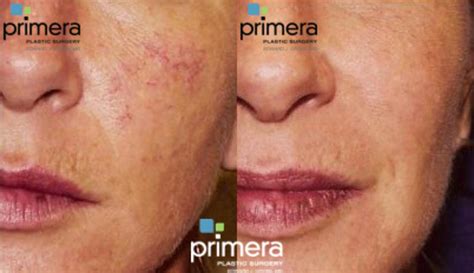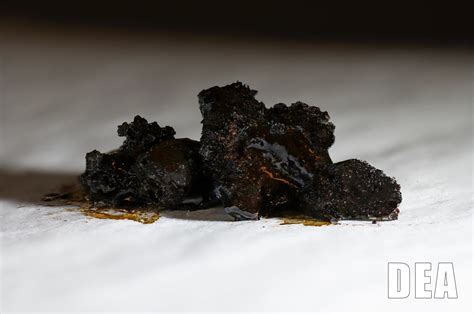The pursuit of flawless skin is a universal quest, with various treatments and technologies emerging to address a range of skin imperfections. Among these, the pulsed dye laser has carved out a niche for itself as a highly effective tool in treating certain skin conditions. This advanced laser technology utilizes a specific wavelength of light to target and alleviate issues such as port-wine stains, rosacea, and other vascular lesions, making it a significant advancement in dermatological treatments.
Understanding the Pulsed Dye Laser
At its core, the pulsed dye laser works by emitting short bursts (pulses) of yellow light. This light is specifically tuned to a wavelength of 585 or 595 nanometers, which is selectively absorbed by hemoglobin in the blood vessels. The absorption of this light energy causes the blood vessels to heat up, leading to their eventual removal by the body’s natural processes. This selective photothermolysis allows the laser to target the affected areas with minimal damage to the surrounding skin, making it both safe and effective.
Applications of the Pulsed Dye Laser
The versatility of the pulsed dye laser is evident in its wide range of applications. It is most commonly used for:
- Port-Wine Stains: These are birthmarks that appear as red or purple marks on the skin due to abnormal blood vessels. The pulsed dye laser is particularly effective in treating these stains, often significantly reducing their appearance.
- Rosacea: Characterized by redness, acne, and visible blood vessels on the skin, rosacea can be challenging to treat. The pulsed dye laser offers a solution by reducing the appearance of these symptoms.
- Telangiectasias: These are small, widened blood vessels on the surface of the skin, often appearing as red spots. The laser can effectively remove these vessels, improving skin appearance.
- Hemangiomas: Although more common in children, some adults may also have these benign tumors composed of blood vessels. The pulsed dye laser can be used to shrink or remove them.
Procedure and Aftercare
The procedure itself is relatively straightforward. Patients are usually prepared by removing any makeup and cleaning the treatment area. Protective eyewear is provided to prevent any accidental exposure of the eyes to the laser. The treatment may cause a stinging sensation, similar to a rubber band snap, but this is typically manageable and temporary. Cooling devices or topical anesthetics may be used to enhance comfort.
Post-procedure, the treated area may appear red or swollen, similar to a mild sunburn. This reaction is generally temporary, resolving within a few days. It’s crucial to avoid sun exposure and use sunscreen to protect the treated skin from further irritation. Makeup can usually be applied immediately after the treatment to conceal any temporary discoloration.
Advances and Future Directions
The technology behind pulsed dye lasers continues to evolve, with newer models offering improved precision and reduced side effects. The development of more advanced cooling systems and adjustable pulse durations has made the treatment more comfortable and effective for a wider range of skin types and conditions.
Moreover, research into combining pulsed dye laser treatments with other dermatological therapies is underway. This multi-modal approach could potentially offer even more comprehensive solutions for complex skin conditions, tailoring treatments to individual patient needs.
Myth vs. Reality: Separating Facts from Fiction
There are several misconceptions surrounding the use of pulsed dye lasers in dermatology. One common myth is that laser treatments are painfully invasive. While it’s true that the procedure can cause some discomfort, advancements in technology and the use of cooling devices have significantly reduced the level of discomfort experienced by patients. Another misconception is that these treatments are unsafe or can cause significant scarring. When performed by a qualified professional, the risk of serious side effects is minimal, and the benefits often far outweigh the risks.
Decision Framework: Is Pulsed Dye Laser Treatment Right for You?
When considering any medical treatment, it’s essential to weigh the potential benefits against the risks and to assess whether the treatment aligns with your personal goals and preferences. Here are some factors to consider:
- Condition Severity: For individuals with pronounced vascular lesions or significant skin discoloration, the pulsed dye laser may offer a substantial improvement in appearance.
- Treatment History: Those who have tried other treatments without satisfactory results might find the pulsed dye laser to be a viable alternative.
- Skin Type: While the pulsed dye laser is versatile, it’s most effective for certain skin types. Consulting with a dermatologist can help determine if this treatment is suitable for your specific skin characteristics.
- Cost and Accessibility: The cost of treatments and the availability of qualified practitioners in your area are also important considerations.
Conclusion
The pulsed dye laser represents a significant advancement in the treatment of select skin imperfections, offering a pathway to improved skin health and aesthetics for many individuals. As with any medical treatment, it’s crucial to approach with an informed mindset, understanding both the benefits and the potential drawbacks. By doing so, individuals can make empowered decisions about their skin care, navigating the complex landscape of dermatological treatments with confidence.
What are the common side effects of pulsed dye laser treatment?
+Common side effects include temporary redness, swelling, and bruising at the treatment site. These reactions are usually mild and resolve on their own within a few days.
How many sessions are typically required for optimal results?
+The number of sessions can vary depending on the condition being treated and the individual’s response to the laser. On average, 1-3 sessions spaced several weeks apart may be necessary to achieve the desired outcome.
Is the pulsed dye laser safe for all skin types?
+While the pulsed dye laser is versatile, it’s most effective and safest for lighter skin types. Individuals with darker skin tones may be at a higher risk for side effects such as hyperpigmentation. It’s essential to consult with a qualified dermatologist to discuss the potential risks and benefits based on your specific skin characteristics.



